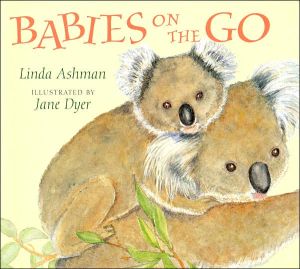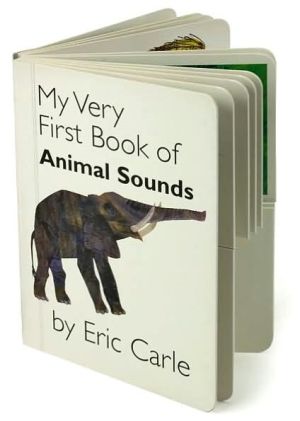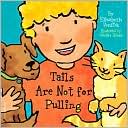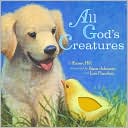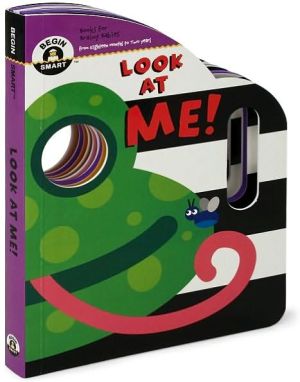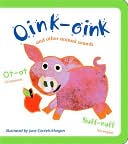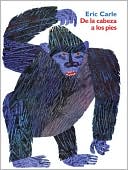Babies on the Go
Babies are most definitely on the move in this exuberant rhyming celebration of all the ways animal parents carry their little ones. Babies and toddlers everywhere will love learning about how all the different babies—including humans—get around.\ \ \ Illustrations and rhyming text show how different animals carry their babies when they are on the move.\
Search in google:
A playful look at how different animals—including people—carry their babies when they're on the movePublishers WeeklyThis crowd-pleaser showcases the way various parents care for their young. "Some babies stand up right away./ They take a step, then run and play," the volume begins. Three panel paintings on the left show mothers with their wobbly-kneed giraffe, deer or hippo, while across the gutter, the three newborns hit their stride. The next spread ("But many need more time to grow, so they have other ways to go") introduces an array of slower starters, whose mode of transport is explained in a series of rhymed couplets. "Surfing on a paddle-tail" serves as caption for a mother beaver towing her baby, for instance. A final page labels each animal portrait, but the emphasis is on reassurance more than science. The polar bear cub is "nudged along with gentle paws," and even the parent crocodile seems blissfully content with her baby who is "floating by in giant jaws." Although the text occasionally strains to make the verb tense fit the formula or reads awkwardly (e.g., the anteater baby "touring solo on their ride" and the lizard baby "boosted by a piggyback"), Ashman's (Castles, Caves, and Honeycombs) uplifting message shines through. Dyer's (Time for Bed) cuddly animal pairs with eyes full of love, reinforce the warmth of this delectably oversize volume. The ending brings the focus back to the audience, showcasing a plethora of human babies riding in strollers and backpacks: "Babies always ride with love." A 10 on the "aw"-inspiring scale.
\ From Barnes & NobleThe Barnes & Noble Review\ Linda Ashman (Can You Make a Piggy Giggle?) and Jane Dyer (I Love You like Crazy Cakes) team up for a sweet exploration of how babies get around. Ashman's clever rhymes explain how tykes of many species travel ("Rolling by in baby strollers / Holding tight to Mother's shoulders / Grabbing on to clumps of hair / Riding bareback through the air"), and Dyer's warm watercolors portray a real sense of comfort and safety. Whether it's a little koala clinging to its mama, a young elephant being "towed along a bumpy trail," or a baby beaver "surfing on a paddle-tail," happy-faced passengers of every sort bask in the sure knowledge that they "always ride with love." \ This book is beautifully designed, with illustrations that slowly move each mother-baby duo along in an easterly direction -- until they reach their final destination; and a delightful "Meet the Babies" montage displays all Dyer's beautiful artwork on the final page. Sweet and tender but never sappy, Babies on the Go is a surefire charmer, perfect for reinforcing the bonds between parents and children. Matt Warner\ \ \ \ \ \ Publishers WeeklyThis crowd-pleaser showcases the way various parents care for their young. "Some babies stand up right away./ They take a step, then run and play," the volume begins. Three panel paintings on the left show mothers with their wobbly-kneed giraffe, deer or hippo, while across the gutter, the three newborns hit their stride. The next spread ("But many need more time to grow, so they have other ways to go") introduces an array of slower starters, whose mode of transport is explained in a series of rhymed couplets. "Surfing on a paddle-tail" serves as caption for a mother beaver towing her baby, for instance. A final page labels each animal portrait, but the emphasis is on reassurance more than science. The polar bear cub is "nudged along with gentle paws," and even the parent crocodile seems blissfully content with her baby who is "floating by in giant jaws." Although the text occasionally strains to make the verb tense fit the formula or reads awkwardly (e.g., the anteater baby "touring solo on their ride" and the lizard baby "boosted by a piggyback"), Ashman's (Castles, Caves, and Honeycombs) uplifting message shines through. Dyer's (Time for Bed) cuddly animal pairs with eyes full of love, reinforce the warmth of this delectably oversize volume. The ending brings the focus back to the audience, showcasing a plethora of human babies riding in strollers and backpacks: "Babies always ride with love." A 10 on the "aw"-inspiring scale.\ \ \ Parenting Magazine"Lovely watercolors and soothing rhymes. . . . A gentle introduction to the animal kingdom."\ \ \ \ \ Children's LiteratureYes, any book illustrated by Jane Dyer is sure to be beautiful, 'awwww' inspiring and heartwarming. The challenge is to have a text that so wonderfully complements it, like Time for Bed manages to do. I am delighted to say that Babies on the Go is up to the challenge. Listen¾"Some babies stand up right away. They take a step, then run and play. But many need more time to grow. So they have other ways to go..." The cadence is fun and the illustrations showing a cygnet on its mother's back to a baby croc in mom's mouth are as educational as they are wonderful to behold. I even like the last 'awwww' line—not too sweet, just right, "On the ground or high above, babies always ride with love." 2003, Harcourt, \ — Sharon Levin\ \ \ \ \ School Library JournalPreS-Toddlers know all about being carried, so they will immediately connect to this title that describes the different and unique ways animal mothers transport their young. In fact, text and illustrations at the beginning and end of the book include human babies, reinforcing this commonality. Unlike those creatures that "stand up right away," the majority of the animals portrayed here "need more time to grow" and must be carried on backs, latch onto tails, hang onto bellies, float along on a tail, or lie snug inside a mother's mouth. Each pair is portrayed on a full page, with a phrase underneath beginning with an apt verb, such as "nudged" or "tucked" or "boosted," that notes the attending movement. Action is also reinforced in many illustrations by an ear or a tail or a paw pushing out beyond the frame. A wide array of creatures inhabits the pages, from kangaroos to crocodiles to bats and opossums. A chart at the end identifies them all, under the heading, "Meet the Babies." The large, soft watercolor illustrations and rhyming text make this celebration of parent/child love a natural for toddler storytime, and it's also perfect for one-on-one sharing.-Jane Marino, Scarsdale Public Library, NY Copyright 2003 Reed Business Information.\ \ \ \ \ Kirkus Reviews"Some babies stand up right away. They take a step then run and play. But many need more time to grow, so they have other ways to go." In her mostly page-sized, close-up animal portraits, Dyer (Little Brown Bear Won't Take a Nap, 2002, etc.) depicts in delicate detail a koala baby perched on Mama's shoulders, a chimp clinging to a parental front, a joey nestled cozily in a pouch, the young of crocodile and lion being carried in their parents' mouths, and so on. The text runs to single lines of large-type text per page, and many of the animals look directly up at viewers, inviting closer inspection. Elephants, koalas-and a coterie of human toddlers in strollers, backpacks, and front packs-open and close this very basic introduction to getting around. The animals are identified in a visual key at the end. "On the ground or high above, babies always ride with love." Sweet.\ \
